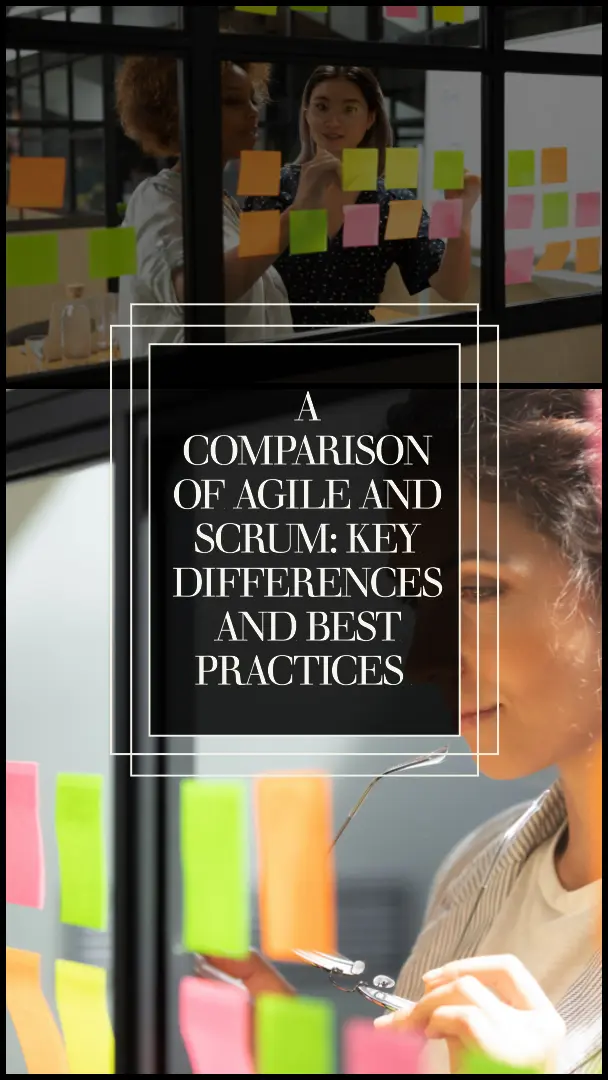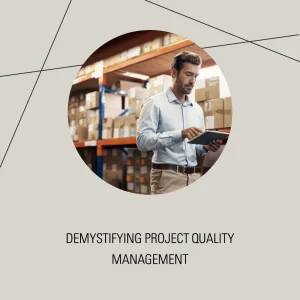To find out how Artificial Intelligence is changing the Project Management landscape, you may enjoy reading this article https://www.shaunstoltz.com/did-artificial-intelligence-just-change-everything-about-project-management/
I. Introduction
Hey there, fellow project management enthusiasts! If you’re as passionate about software development as I am, you’ve probably heard of Agile and Scrum. These two buzzwords have been circulating the tech world for quite some time now, but do you really know the differences between them and when to use each approach? Fear not, my curious friend! In this blog post, we’ll dive into the fascinating world of Agile and Scrum, discuss their key differences and similarities, and help you choose the right approach for your project.
As someone who has spent countless hours researching, experimenting with, and implementing various project management methodologies, I understand how confusing it can be to navigate through the sea of frameworks and techniques out there. That’s why I’m here to help you make sense of it all and share some of the valuable insights I’ve gained along the way.
Before we start comparing Agile and Scrum, let’s first establish what they are. In a nutshell, Agile is an overarching philosophy and set of values for software development, while Scrum is a specific framework that operates under the Agile umbrella. But there’s so much more to it than just that!
By the end of this blog post, you’ll have a solid understanding of Agile and Scrum, their core principles, and how they can be applied to your projects. So, buckle up and let’s start this exciting journey together!
II. Overview of Agile Methodology
A. Definition and origin of Agile
Alright, let’s kick off this journey by discussing Agile! Agile was born out of the frustration with the traditional, rigid “waterfall” approach to software development. You see, back in the day, software development projects were often plagued by delays, scope creep, and poor communication between team members. It was clear that something needed to change. That’s when a group of seventeen software development thought leaders came together in 2001 to create the Agile Manifesto, which would revolutionize the way we build software.
B. Core principles of the Agile Manifesto
The Agile Manifesto consists of four key values and twelve principles that put emphasis on collaboration, flexibility, and customer satisfaction. The four values are:
- Individuals and interactions over processes and tools
- Working software over comprehensive documentation
- Customer collaboration over contract negotiation
- Responding to change over following a plan
These values highlight the importance of people and their ability to adapt to changing requirements, rather than rigidly sticking to predefined plans and documentation. After all, software development is a dynamic process, and being able to respond to change quickly can make all the difference in delivering a successful project.
C. Popular Agile frameworks and methodologies
Agile is not a one-size-fits-all approach. In fact, it’s more like a spectrum, with various frameworks and methodologies that cater to different needs and preferences. Some of the most popular Agile methodologies include:
- Scrum: A highly structured framework that emphasizes short, iterative development cycles called sprints. We’ll dive deeper into Scrum in the next section!
- Kanban: A visual approach that focuses on continuous improvement and delivering small, incremental changes. It’s all about that flow, baby!
- Extreme Programming (XP): A software development methodology that emphasizes customer satisfaction and communication, with a strong focus on engineering practices like test-driven development and pair programming.
- Lean Software Development: Inspired by lean manufacturing principles, this approach focuses on reducing waste, optimizing processes, and delivering value to customers as quickly as possible.
- Feature Driven Development (FDD): A model-driven approach that emphasizes planning and designing based on features, with a focus on delivering tangible, working software frequently.
As you can see, Agile is more of a mindset and philosophy than a rigid set of rules. There’s plenty of room for customization, and teams can pick and choose the methodologies and practices that work best for them. So, whether you’re a fan of the structured Scrum framework or the more fluid Kanban method, there’s an Agile approach that’s just right for you and your team!
III. Overview of Scrum Methodology
A. Definition and origin of Scrum
Now that we’ve covered the Agile landscape, it’s time to zoom in on one of its most popular frameworks: Scrum! Scrum was developed in the early 1990s by Jeff Sutherland and Ken Schwaber as a way to tackle complex and adaptive projects. Its name was inspired by the scrum formation in rugby, where players huddle together to restart the game – a fitting metaphor for the close collaboration and teamwork that Scrum emphasizes.
B. Core principles of Scrum
Scrum is based on three pillars: transparency, inspection, and adaptation. The idea is that by making work visible, regularly reviewing progress, and adapting as needed, teams can deliver high-quality products quickly and efficiently. Scrum also shares the same values as Agile, placing a strong emphasis on collaboration, flexibility, and customer satisfaction.
C. Key roles, artifacts, and events in Scrum
Scrum has a well-defined structure that includes specific roles, artifacts, and events. Let’s break them down:
- Roles:
- Product Owner: The person responsible for defining and prioritizing the product backlog and ensuring the team is working on the most valuable tasks.
- Scrum Master: A servant-leader who helps the team follow Scrum practices, removes obstacles, and ensures smooth communication between team members and stakeholders.
- Development Team: A cross-functional group of professionals who work together to deliver potentially shippable increments of the product at the end of each sprint.
- Artifacts:
- Product Backlog: An ordered list of features, bug fixes, and other work items that need to be addressed to create a successful product.
- Sprint Backlog: A subset of the product backlog that the team commits to completing during a specific sprint.
- Increment: The potentially shippable product increment created at the end of each sprint, which includes all completed backlog items.
- Events:
- Sprint: A time-boxed period (usually 2-4 weeks) during which the team works on completing the sprint backlog items.
- Sprint Planning: A meeting held at the beginning of each sprint to determine the sprint backlog and set the sprint goal.
- Daily Scrum: A short, daily meeting (usually 15 minutes) for the development team to discuss progress, synchronize work, and address any obstacles.
- Sprint Review: A meeting held at the end of each sprint to demonstrate the completed increment to stakeholders and gather feedback.
- Sprint Retrospective: A meeting held after the sprint review to reflect on the sprint and identify opportunities for improvement.
As you can see, Scrum provides a clear structure and a set of practices that help teams deliver high-quality products in a timely manner. But how does it differ from other Agile methodologies? Let’s explore that in the next section!
IV. Key Differences between Agile and Scrum
A. Agile as an umbrella term vs. Scrum as a specific framework
Alright, it’s time to address the million-dollar question: What sets Agile and Scrum apart? The main distinction is that Agile is an umbrella term that encompasses a wide range of methodologies and practices, while Scrum is a specific framework that falls under the Agile umbrella. Think of Agile as the overarching philosophy and set of values, with Scrum being one way to implement those values in a structured manner.
B. Flexibility in Agile methodologies vs. defined structure in Scrum
While both Agile and Scrum prioritize flexibility and adaptability, the level of structure varies between them. Agile methodologies can be as structured or as fluid as a team prefers, allowing for customization based on individual needs and preferences. On the other hand, Scrum has a well-defined set of roles, artifacts, and events that provide a more rigid framework for teams to follow. This structure can be especially helpful for teams transitioning from a traditional project management approach, as it offers clear guidance and expectations.
C. Different roles and artifacts in other Agile methodologies
Another key difference lies in the roles and artifacts associated with each approach. As we’ve seen, Scrum has specific roles like the Product Owner, Scrum Master, and Development Team, along with artifacts like the product backlog, sprint backlog, and increment. Other Agile methodologies, such as Kanban or Extreme Programming (XP), have their own unique roles and artifacts that cater to their specific goals and practices.
For example, in a Kanban setting, you might not have a dedicated Scrum Master, but rather a team member who takes on the responsibility of managing the Kanban board and ensuring work is flowing smoothly. Similarly, XP introduces practices like pair programming and test-driven development, which might not be present in a Scrum environment.
So, while Agile and Scrum share many common values and principles, their implementation can vary significantly depending on the chosen methodology or framework. The key is to understand the nuances of each approach and select the one that best fits your project’s needs and your team’s preferences.
V. Similarities between Agile and Scrum
Now that we’ve explored the differences between Agile and Scrum, let’s talk about what they have in common. After all, Scrum is a part of the Agile family, so it’s only natural that they share some core principles and values. Here are some similarities that unite these two approaches:
A. Both focus on iterative and incremental development
At the heart of both Agile and Scrum lies the concept of iterative and incremental development. This means that instead of trying to deliver a complete product all at once, teams work on small, manageable chunks, and continuously improve the product with each iteration. This approach allows for faster delivery, better risk management, and more opportunities to incorporate customer feedback.
B. Both prioritize collaboration, flexibility, and customer feedback
Agile and Scrum both emphasize the importance of collaboration among team members, as well as with customers and stakeholders. Open communication, shared decision-making, and a focus on continuous improvement are key aspects of both approaches. Additionally, they prioritize flexibility and adaptability, encouraging teams to embrace change and respond to new information or requirements quickly and effectively. This customer-centric mindset ensures that the end product is closely aligned with user needs and expectations.
C. Both aim to deliver high-quality software quickly and efficiently
The ultimate goal of both Agile and Scrum is to deliver high-quality software quickly and efficiently. By breaking work down into smaller, more manageable tasks and focusing on continuous improvement, teams can reduce waste, streamline processes, and ensure that the final product meets or exceeds customer expectations.
In conclusion, while Agile and Scrum have their differences, they share a common foundation of values and principles that prioritize collaboration, flexibility, and customer satisfaction. Understanding the nuances of each approach can help you select the right methodology for your project and maximize your team’s success.
VI. Best Practices for Choosing the Right Approach
So, we’ve explored the fascinating worlds of Agile and Scrum, but how do you decide which approach is right for your project? The truth is, there’s no one-size-fits-all answer – it all depends on your team, your project, and your organization. But don’t worry! I’m here to share some best practices and tips to help you make an informed decision.
A. Factors to consider when choosing a methodology
When selecting the right approach for your project, consider the following factors:
- Project size and complexity: Smaller projects with fewer dependencies might benefit from a more flexible Agile methodology like Kanban, while larger, more complex projects could benefit from the structure and organization that Scrum provides.
- Team experience and knowledge: Consider your team’s familiarity with Agile and Scrum. If your team members are already well-versed in Scrum practices, it might make sense to stick with what they know. On the other hand, if your team is new to Agile, starting with a simpler approach like Kanban could be a smoother transition.
- Organizational culture and flexibility: Assess your organization’s culture and openness to change. Some companies may embrace the flexibility and adaptability of Agile methodologies, while others might prefer the structure and predictability of Scrum.
- Customer involvement and feedback: If your project requires frequent customer feedback and collaboration, an Agile methodology like Scrum or Extreme Programming (XP) that emphasizes regular customer interaction could be a good fit.
B. Benefits and drawbacks of Agile and Scrum
As with any approach, there are pros and cons to consider when choosing between Agile and Scrum:
- Agile methodologies can offer more flexibility and adaptability, allowing teams to pivot quickly in response to changing requirements. However, this flexibility may also lead to a lack of structure and accountability if not managed properly.
- Scrum provides a clear structure and set of practices that can help teams stay organized and focused on delivering high-quality products. However, this structure may feel too restrictive for some teams or projects that require more fluidity and autonomy.
C. Tips for implementing Agile or Scrum in your project
If you’ve decided to adopt Agile or Scrum for your project, here are some tips to help ensure a successful implementation:
- Start with training: Provide your team with the necessary training and resources to understand and adopt the chosen methodology effectively.
- Establish clear roles and responsibilities: Ensure that everyone on the team understands their role and responsibilities within the chosen framework.
- Communicate with stakeholders: Keep stakeholders informed about your project’s progress and any changes to the plan or scope.
- Embrace continuous improvement: Regularly review and adapt your processes to ensure they are meeting the needs of your team and project.
- Be patient and persistent: Adopting a new methodology can be challenging, but with persistence and a commitment to continuous improvement, your team will reap the benefits in the long run.
In the end, the best approach is the one that aligns with your team’s needs, preferences, and organizational culture. So take your time, weigh your options, and choose the methodology that will set your team up for success!
VII. Conclusion
Well, my friends, we’ve come a long way together! We’ve delved into the worlds of Agile and Scrum, explored their key differences and similarities, and discussed some best practices for choosing the right approach for your project. I hope this journey has not only been informative but also enjoyable, as I truly believe that understanding these methodologies can be a game-changer for your team and your projects.
As you move forward, remember that the most important aspect of any project management approach is its ability to adapt and evolve to meet the needs of your team, your customers, and your organization. Don’t be afraid to experiment, iterate, and continuously improve your processes. After all, that’s what Agile and Scrum are all about!
So, go forth and embrace the power of Agile and Scrum, my fellow project management enthusiasts! I have no doubt that with the right approach and mindset, you and your team will be well-equipped to tackle any project, no matter how complex or challenging. And hey, don’t forget to have fun along the way – because at the end of the day, it’s not just about delivering great software; it’s about enjoying the journey and growing together as a team.
Find out more about Shaun Stoltz https://www.shaunstoltz.com/about/
This post was written by an AI and reviewed/edited by a human.



